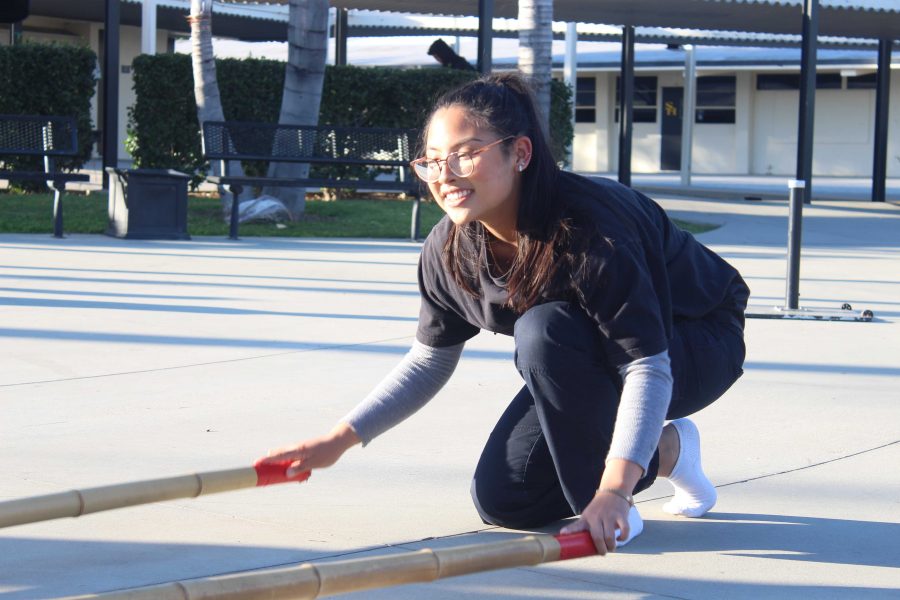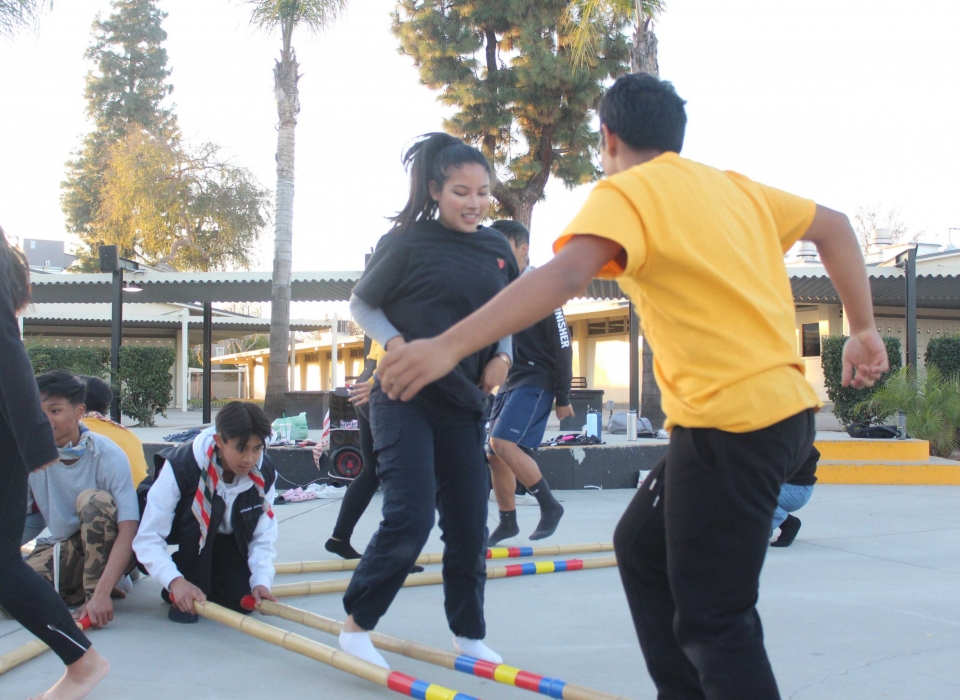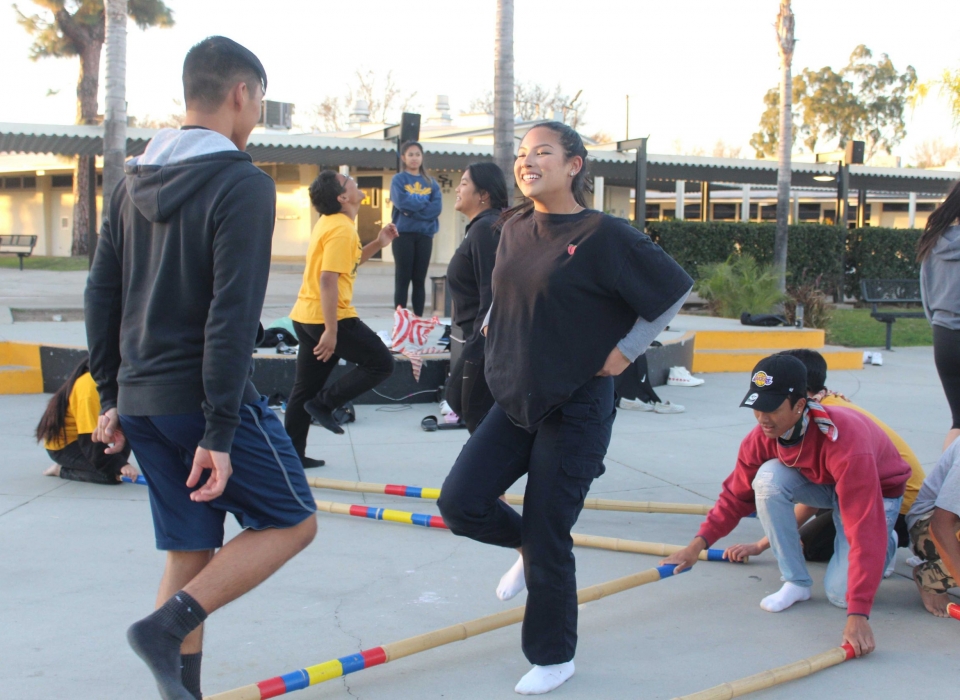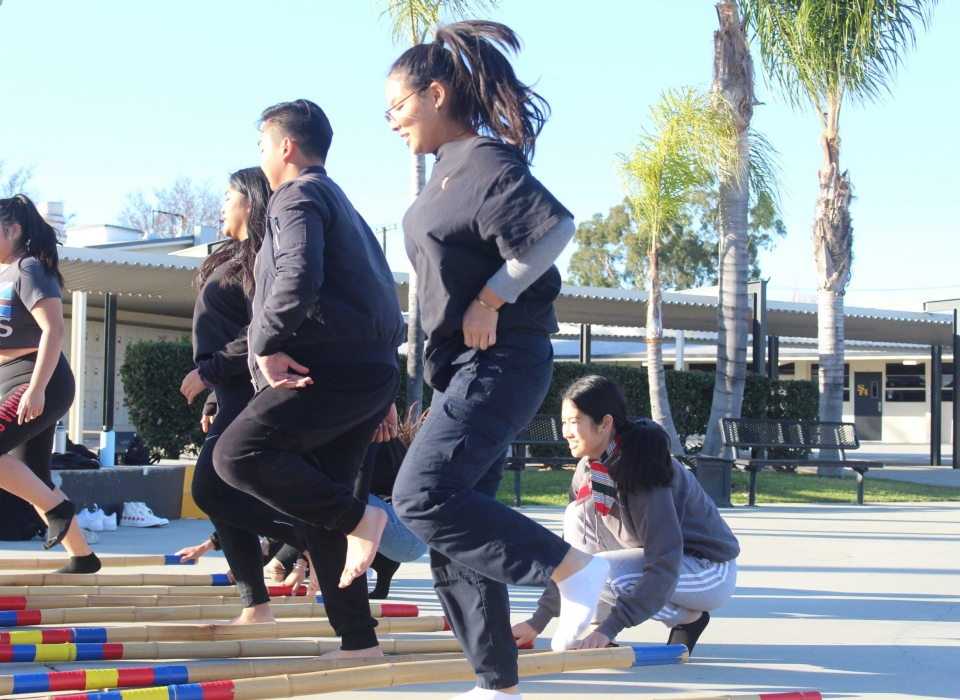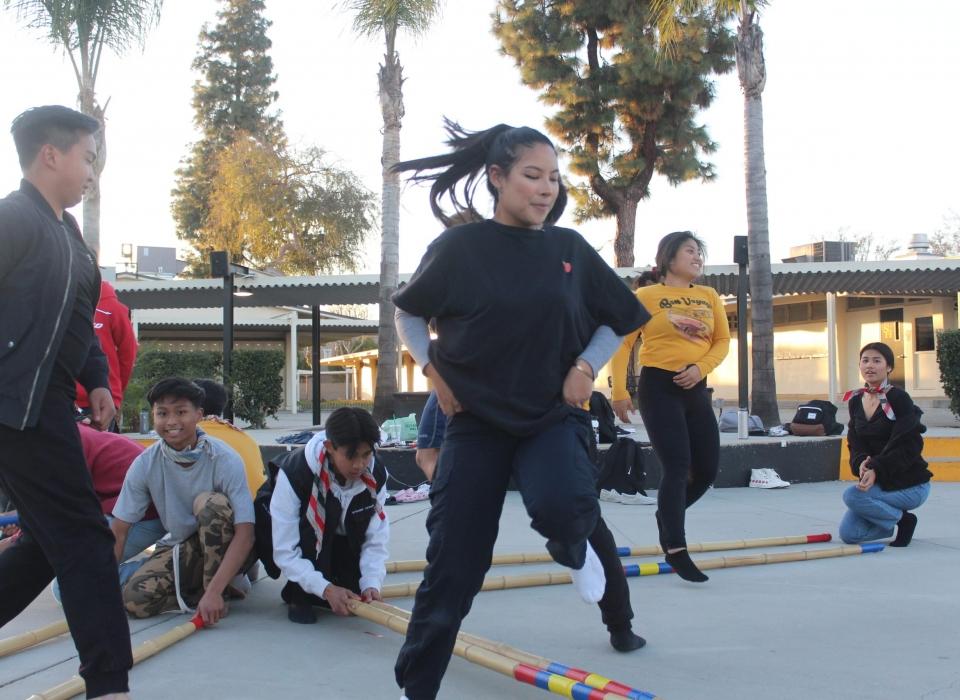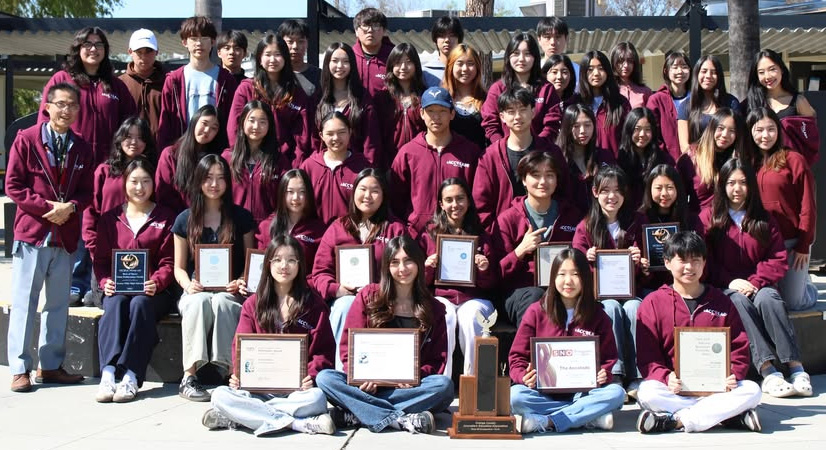If you’ve ever been to the International Food Fair [IFF] assembly (like the one we had on Feb. 6), then you’ve most likely watched the program end with the Bayanihan Club performing a famous Filipino folk dance called tinikling.
It’s a dance that is performed with four people and a dancer or two; one person holds a 10-foot-long bamboo stick on one end, while another person holds onto the other end; another two people hold a second bamboo stick the same way.
While they place the sticks on the ground, they then start creating a beat by smashing the sticks together at various intervals or pounding them onto the ground; eventually, the dancer or dancers hop into the center of the parallel sticks and jump back out each time the poles are banged together as part of following a set rhythm.
Even though I’ve always seen tinikling performed at this school and in the Philippines — where I’ve traveled to on three separate occasions — I never knew the cultural significance of this dance. So upon doing some online research on scribd.com, I found that this tricky and sometimes intense dance originated from the island of Visayas in the central Philippines.
The name of the dance literally translates to “tikling-like,” which started because the dance was meant to mimic tikling birds as they step through tree branches, run over grass stems or avoid bamboo traps that were set by rice farmers.
Another legend has it that centuries ago when Spain conquered the Philippines, peasants who did not work hard enough were punished by having to stand between two poles on the ground that were then beaten against their feet. To escape such a painful punishment, the native Filipinos jumped away from the sticks when they were about to be clapped.
Although this will be my third year performing in the IFF assembly for the Bayanihan Club, this is my first time participating in tinikling, which according to the group’s leaders has often been reserved for upperclassmen because of the dance’s physical and intellectual demands.
I’ve been looking forward to being a part of this dance since my freshman year because my sense was that it was meant for the older and “cooler” members of the club.
On the first day of my practice last November (we worked in the quad after school two days a week, and as we were getting closer to the assembly date, we practice almost every day; our practice times even extend into the weekends when we have longer practices in the morning), we were taught basic choreography without asking people to click the sticks for the dancers.
I love watching the dance in its final form, so I was hoping we’d get to dance with the sticks after one or two practices. I was bummed out when I found out sticks would not be clicked for another three weeks or so.
What I didn’t know then, however, was that I was going to have the most trouble with the sticks out of everyone in my set. If I knew how difficult and tiring it would be to practice full out, I would have cherished those first three weeks of practice a lot more.
It was until almost 10 practices later that the sticks were actually used with our dance routine. My coordinators, seniors Kayla Javonillo and Russel Mallari, led my set in practicing our memorized choreography with the sticks.
We practiced on a slower count at first so that we can get comfortable with the movements. Once we got the hang of it, we started to pick up the speed. For example, Javonillo and Mallari first taught us a move for what they called, “basic one, basic two,” which is the simplest tinikling move that involves hopping into the sticks with my right foot, followed by my left foot, and then back out of the space between the sticks before my feet get caught.
Then, they showed us a move in which both dancers step in and out of the center of the sticks while grabbing the other persons’s hand and pulling closer to each other. They called this “RK (the first name initials of our coordinators) one, RK two.”
After we got those down, we learned many others like “cross over, 180 (as in 180-degree turn), diamond one (the shape of the move), diamond two, basic, Jeff-cross one (a move named after a former club member), Jeff-cross two, back stutter.”
Repeating these either out loud or in my mind throughout many of my practice sessions helped me to eventually get the choreography down.
When we started going full out with the sticks in January, it was still much harder than I thought.
When we first began practicing with the sticks, our coordinators told us to remove our shoes so that our shoes don’t get caught in the sticks. Getting my socks dirty wasn’t very exciting for me, but I knew it was going to help us rehearse more efficiently.
Immediately after performing the dance at full speed, I was worried about getting hurt even though the sticks we use are hallow and made of plastic instead of the bark bamboo ones that my Filipino ancestors once used.
I’ve seen members in previous years get injured during practice. One of my friends last year even sprained her ankle while trying to avoid the sticks from striking her; she was unable to perform to prevent further injury. I was scared that the same thing would happen to me, or even worse.
So I felt like I was bound to end up hurt as well at some point. I remember my very first time practicing at full speed with the clicks. My ankle would get caught in between the two sticks that were being hit, and it felt similar to taking a Razor scooter to the ankle — a feeling many of my peers know all too well.
Unfortunately, I am not the most gifted when it comes to dancing. Therefore, I am more susceptible to all of the unfortunate injuries that happen as a result of practicing to perfection.
One of the worst experiences while mastering the choreography is when my ankle gets stuck in between the sticks as they’re being hit together. The pain gets even worse when I jump wrong and roll my ankle.
From watching me practice after school, I’ve had many of my friends approach me at school and ask if the dance is hard to learn.
They tell me they’d be scared to perform the dance because of the fear of being smashed by two bamboo poles. I simply explain to them that tinikling may seem dangerous and intimidating at first, but with practice, anyone can perform it.
I am half-Filipino and half-Mexican, and since middle school, I have heard from my older friends who attended Sunny Hills about what it’s like to be in the Bayanihan Club. Performing this year in the IFF assembly has brought me closer to my culture.
In my last year and a half here at Sunny Hills or beyond, I would like to familiarize myself with some of the traditional Mexican folk dances in the future. I’m sure those will require “basic one, basic two” moves as well.



